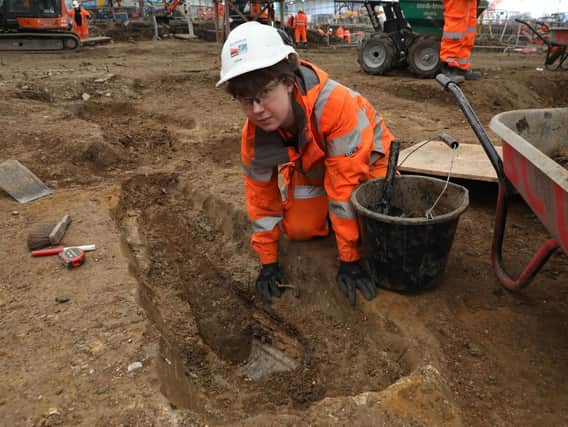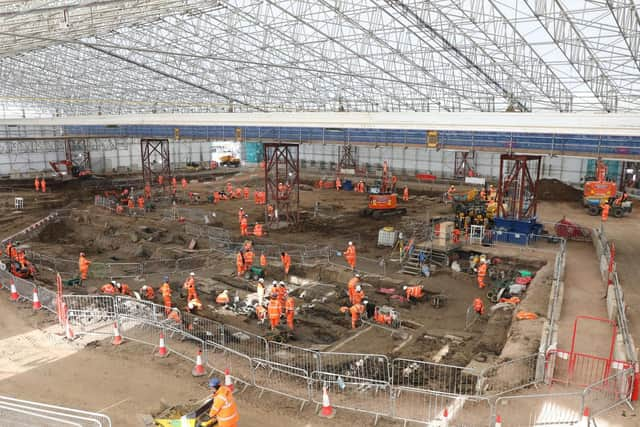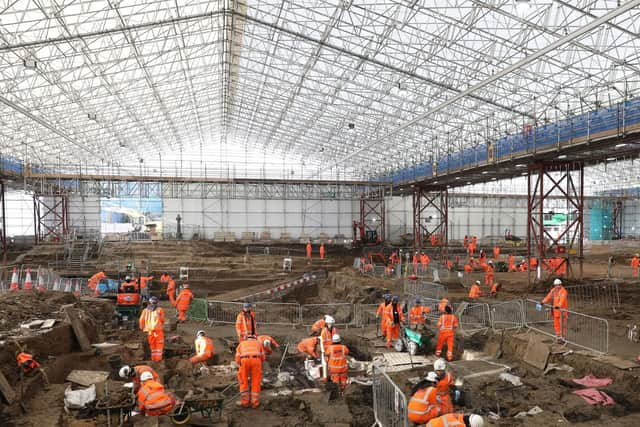Remains of famed Royal Navy explorer who helped map Australia found at HS2 dig


The experts made the discovery of the remains of Captain Matthew Flinders, who is also credited with giving Australia its name, as they excavate St James's burial ground, Euston, London.
Tens of thousands of skeletons will be removed from the burial ground where the station for the HS2 rail route will be built.
Advertisement
Hide AdAdvertisement
Hide AdThe discovery so early in the dig has thrilled archaeologists who were not confident they would find Captain Flinders among the 40,000 people interred there.


They were able to identify the remains of the explorer, who was buried in the burial grounds on July 23, 1814, by the lead breast plate placed on top of his coffin.
Captain Flinders made several significant journeys, notably as commander of HMS Investigator which he navigated around the entire coast of Australia, the first known person to do so, confirming it as a continent.
He is also credited with giving Australia its name, although he was not the first to use the term, with his work popularising its use.
Advertisement
Hide AdAdvertisement
Hide AdHis surname is also associated with many places in Australia, including Flinders Station in Melbourne, Flinders Ranges in South Australia and the town of Flinders in Victoria.


But the headstone marking his final resting place was removed following the expansion of Euston Station westwards into part of the burial ground in the 1840s, and it was thought his remains had been lost.
For a long time there was an urban myth that Captain Flinders was buried under platform 15.
At the bicentenary of this death, a statue was unveiled by the Duke of Cambridge at Australia House and later installed at Euston Station.
Advertisement
Hide AdAdvertisement
Hide AdIt features Trim the cat, who was renowned for having sailed around the globe, as well as circumnavigating Australia during the voyages of exploration of his master, Captain Flinders.
Helen Wass, HS2 head of heritage, said: ‘The discovery of Captain Matthew Flinders' remains is an incredible opportunity for us to learn more about the life and remarkable achievements of this British navigator, hydrographer and scientist.
‘Captain Matthew Flinders put Australia on the map due to his tenacity and expertise as a navigator and explorer.
‘Given the number of human remains at St James's, we weren't confident that we were going to find him.
Advertisement
Hide AdAdvertisement
Hide Ad‘We were very lucky that Captain Flinders had a breastplate made of lead, meaning it would not have corroded.
‘We'll now be able to study his skeleton to see whether life at sea left its mark and what more we can learn about him.’
She added: ‘This discovery is particularly exciting for me as an archaeologist as Capt Matthew Flinders was the grandfather of renowned Sir William Matthew Flinders Petrie, commonly known as the 'father of archaeology'.’